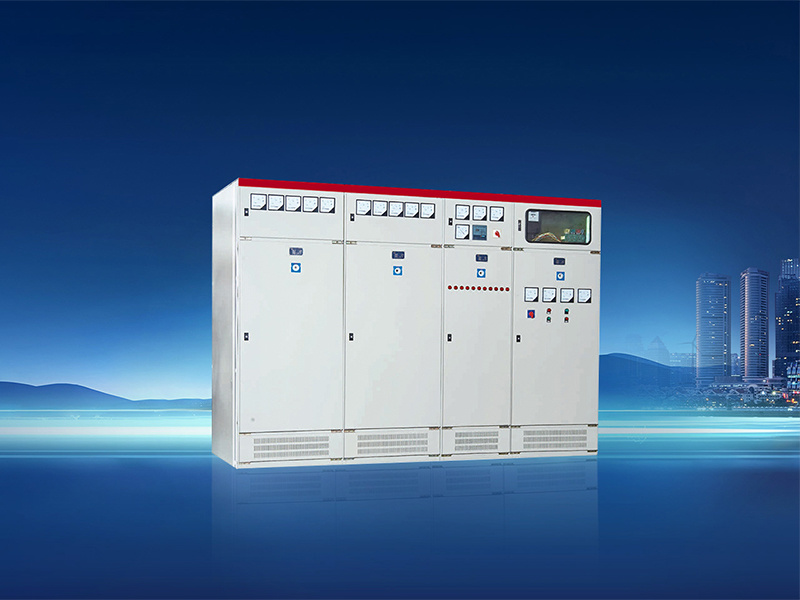The structural design and electrical performance requirements of drawer-type switchgear.
Structural design and electrical performance requirements of drawer-type switchgear
Structural design and electrical performance requirements of drawer-type switchgear
The overall structural design of low-voltage switchgear involves four aspects of electrical performance requirements:
1. Insulation coordination
2. Dynamic thermal stability performance
3. Improve the protection capability against fault arcs
4. Temperature rise
① Strengthening the insulation performance of the equipment helps to improve the overall ability to withstand overvoltage.
The insulation coordination of drawer-type switchgear is determined by factors such as the operating environment conditions, the installation location in the power supply system (overvoltage category), and the performance of insulation materials, which dictate the minimum electrical clearance and creepage distance. The classification of insulation materials is divided into four categories based on the value range of the material's comparative tracking index (CTI): Category I 600≤CTI; II 400≤CTI<600; III 175≤CTI<400E; IV 100≤CTI<175E. There are many insulation components in low-voltage drawer cabinets, such as insulators, busbar clamps, and functional boards made of polycarbonate engineering plastics, as well as secondary connectors, all of which affect the overall insulation performance of the cabinet. Statistics show that about 50% of accidents in electrical products in China are caused by insulation systems. Of course, if the insulation components are appropriately selected and meet quality requirements during normal operation of the system, their electrical performance can still fully meet the requirements, as the voltage level is not high. If under a pollution level of 4, the selection of insulation materials should be a key consideration, such as using insulation for the main busbar inside the cabinet that exceeds standard performance in terms of creepage distance and electrical clearance, and using insulation components with high CTI values.
② The dynamic thermal stability performance of the cabinet has always been a primary consideration for customers. Especially under high current conditions, the structural strength requirements for the cabinet are very high. In the event of a short circuit, the cabinet should have the ability to withstand short-circuit currents. As a designer of low-voltage cabinets, the first consideration should be the fixing method and placement of the horizontal main busbar. For example, in a large power plant with a 300MW unit, the low-voltage incoming line current is generally greater than 4000A, and according to process requirements, the main busbar is 3X3 (100x10). However, in practice, this is not how it is selected. Generally, a single-phase arrangement is considered with two layers, each layer having two 80x10 busbars, and special insulated busbar clamps are used for fixing. This structural design disperses the impact of short-circuit currents on the cabinet, greatly enhancing the cabinet's overall ability to withstand short-circuit currents. Strengthening the contact pressure at the bolt connection points and ensuring the torque and angle of the bolt connections can also resist the impact of short-circuit currents.
③ To improve the fault arc protection capability of the equipment, metal partitions are commonly used for isolation and prevention measures within the structure, insulating the live conductors, adding pressure relief channels, and arc detection devices.
There are various factors that contribute to the generation of fault arcs, which will not be discussed here. IEC 4397-1 specifies the objectives of arc protection, ultimately requiring: ① to prevent access to hazardous parts of adjacent functional units; ② to prevent solid foreign objects from entering adjacent units from one unit of the complete equipment; ③ to provide the highest possible level of personal protection. To this end, the functional rooms of the cabinet are strictly separated, mainly divided into functional unit rooms, busbar rooms (horizontal and vertical busbar rooms), and cable rooms, which not only prevents the spread of accidents but also facilitates live maintenance. This is a unique aspect of the structural design of low-voltage drawer cabinets, aimed at limiting the generation of arcs, as well as their intensity and duration.
To prevent fault arcs generated in switchgear from harming nearby personnel, pressure relief devices are added to the top of the cabinet. When a fault arc ignites, the pressure generated forces the pressure relief device to open, directing the hot gases towards the top of the cabinet, thereby ensuring personnel safety. This passive arc protection function is a measure taken after an arc has occurred, primarily to protect personal safety, but it is an essential part of the cabinet's structural design. It is also worth mentioning that developing low-voltage complete switchgear with fault arc protection and verifying it through IEC-1641 "Guidelines for Testing the Arc Fault of Enclosed Low-Voltage Switchgear and Controlgear" is particularly important.
④ The temperature rise of drawer switchgear is also an important indicator for evaluating the structural design of the cabinet. The temperature rise inside the cabinet is related to parameters such as the size of the shell, the installation form of the shell, whether there are ventilation slots and their size, the number of internal horizontal partitions, the effective loss of components, and the number of drawer units. As a manufacturer, when the design of the product is finalized, it is impossible to change various parameters on the drawings. In the actual design process, some clients or design institutes, in order to save space and the number of devices, have excessively equipped the number of drawers. Although installation can be completed, the temperature rise of the cabinet is often overlooked, especially in summer. If the distribution room is poorly ventilated, the temperature rise inside the cabinet can become excessively high during use, leading to equipment damage and insulation breakdown, resulting in short-circuit accidents. This should draw the attention of our designers, and it is necessary to raise this issue with the other party.
The design of the upper and lower ventilation slots should not only meet the temperature rise requirements but also consider whether the protection level is adequate. For IP54 cabinets, the derating factor should be fully considered; otherwise, it is easy to cause excessive temperature rise. Additionally, companies should regularly conduct temperature rise tests to obtain sufficient data and make necessary improvements and adjustments to the cabinet's internal structure.





